Quiverheart Gorge
Quiverheart Gorge. A 99-acre preserve located in Adams County, Ohio. Quiverheart Gorge protects an astonishingly deep dolomite gorge in northwestern Adams County in a region better known for its rolling short grass prairies than its deep valleys. The fact that this gorge is an unexpected landscape feature makes it all the more remarkable and treasured. During the rainy season, Quiverheart has the largest and most beautiful waterfall in the Arc of Appalachia preserve system. The rock formations of Quiverheart are diverse and varied, providing hikers with dramatic scenery around every corner.
Hiking: Sunrise to Sunset
Address: 2199 State Route 781, Peebles, OH 45660
Download and Go! - Hiking Guide and More Information
A dog owner's guide to hiking the Arc of Appalachia

Photo by Tim Pohlar
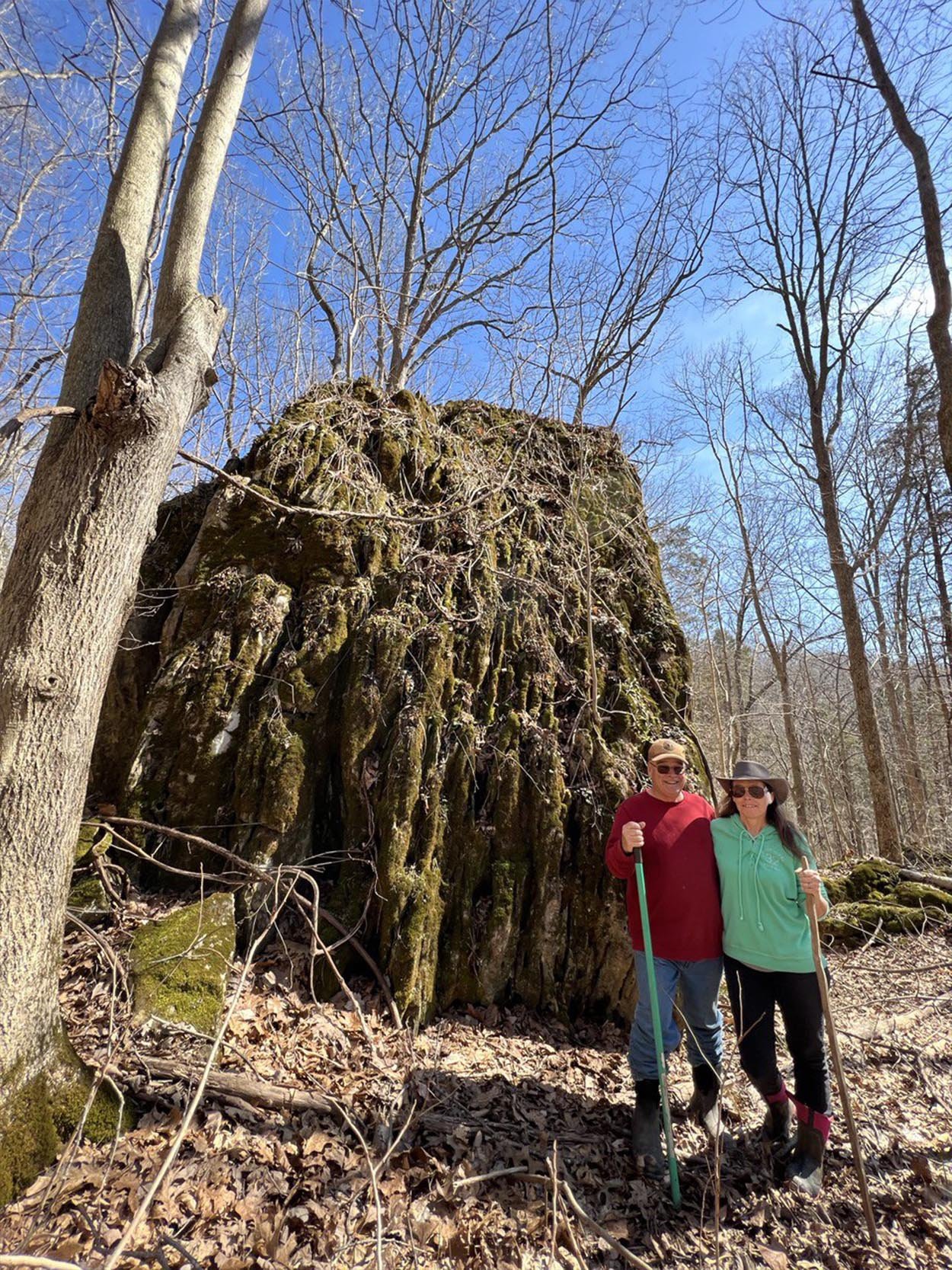
Kim and David Baker - Photo by Tim Pohlar
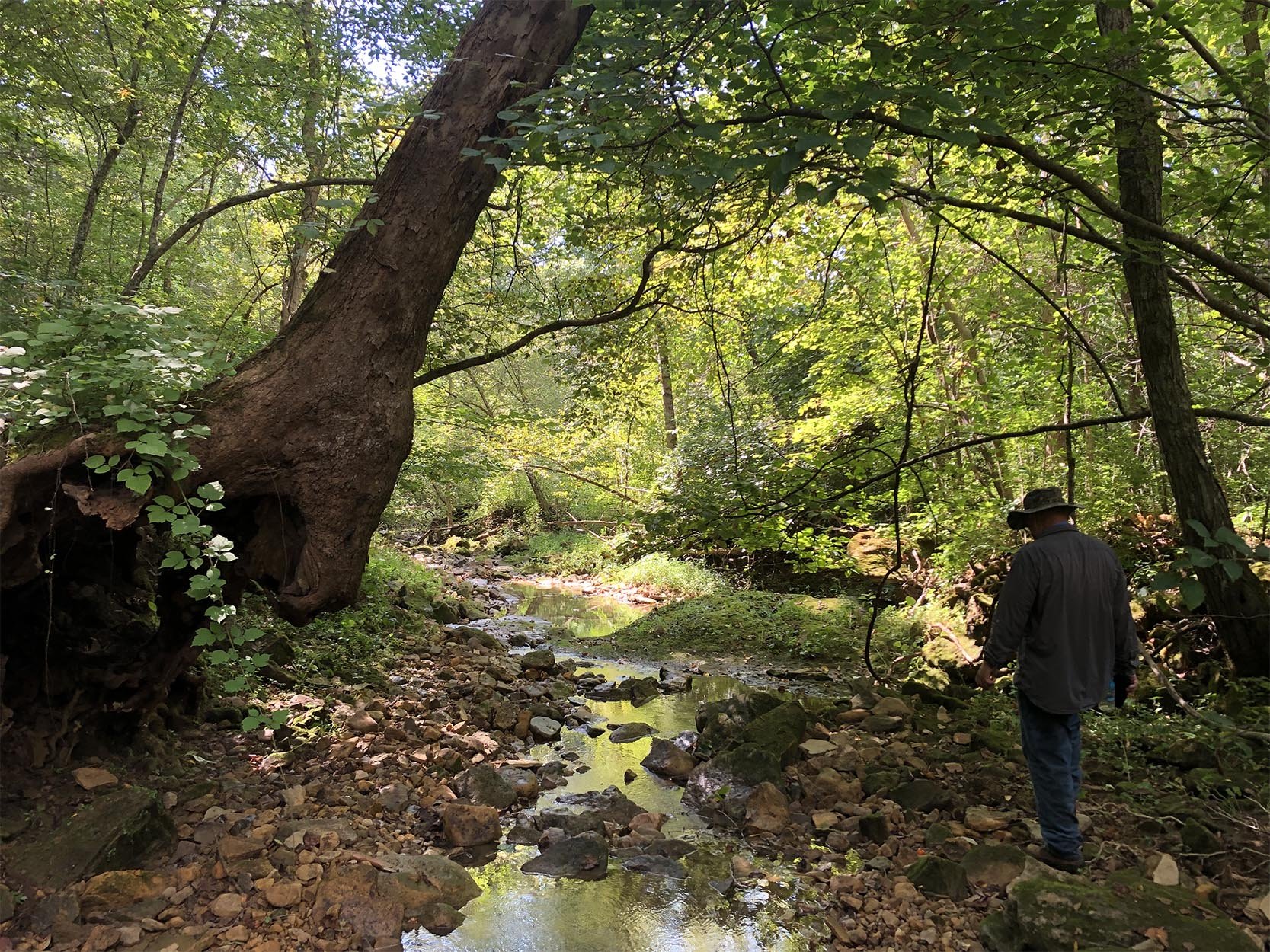
Photo by Tim Pohlar
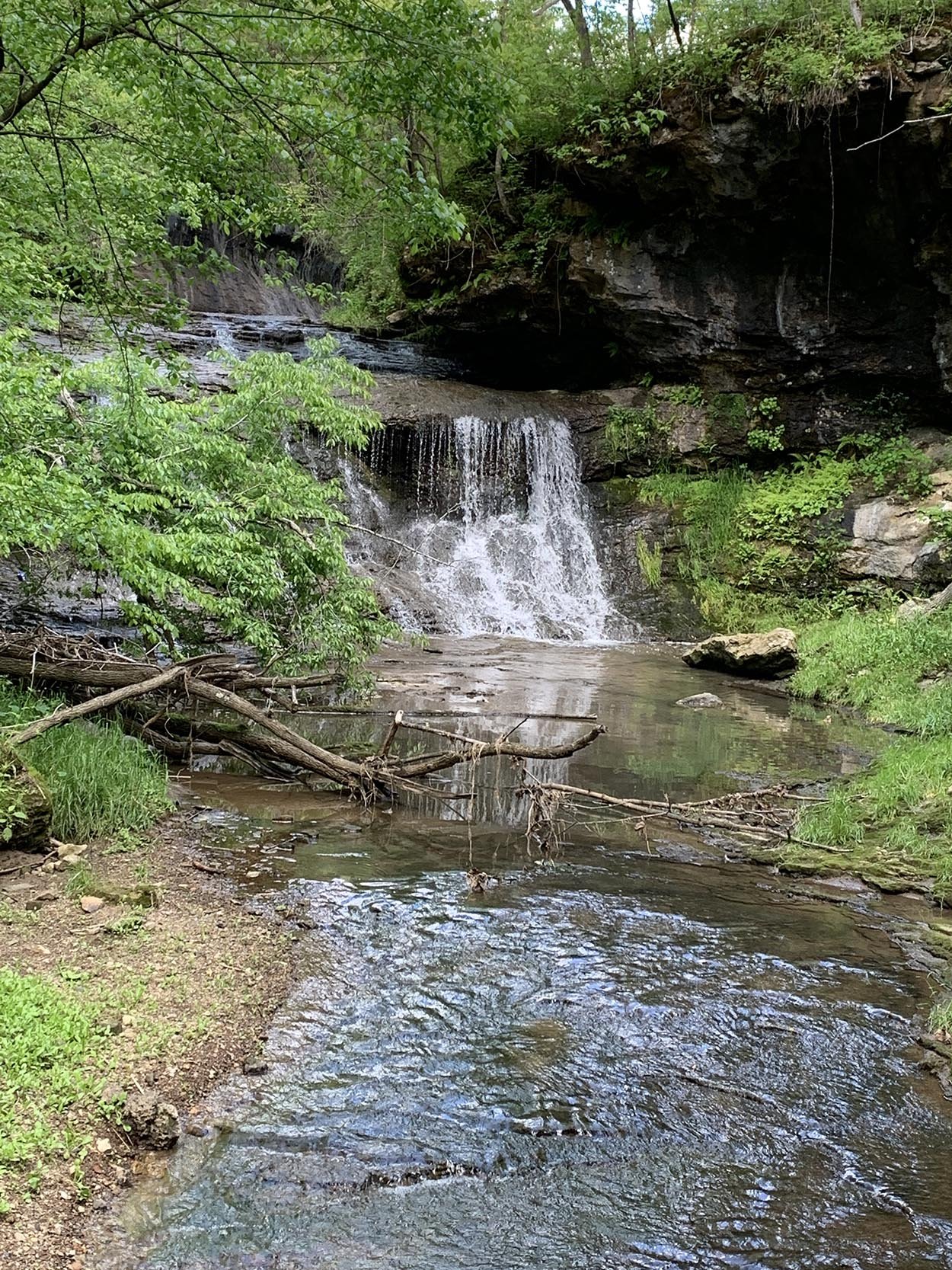
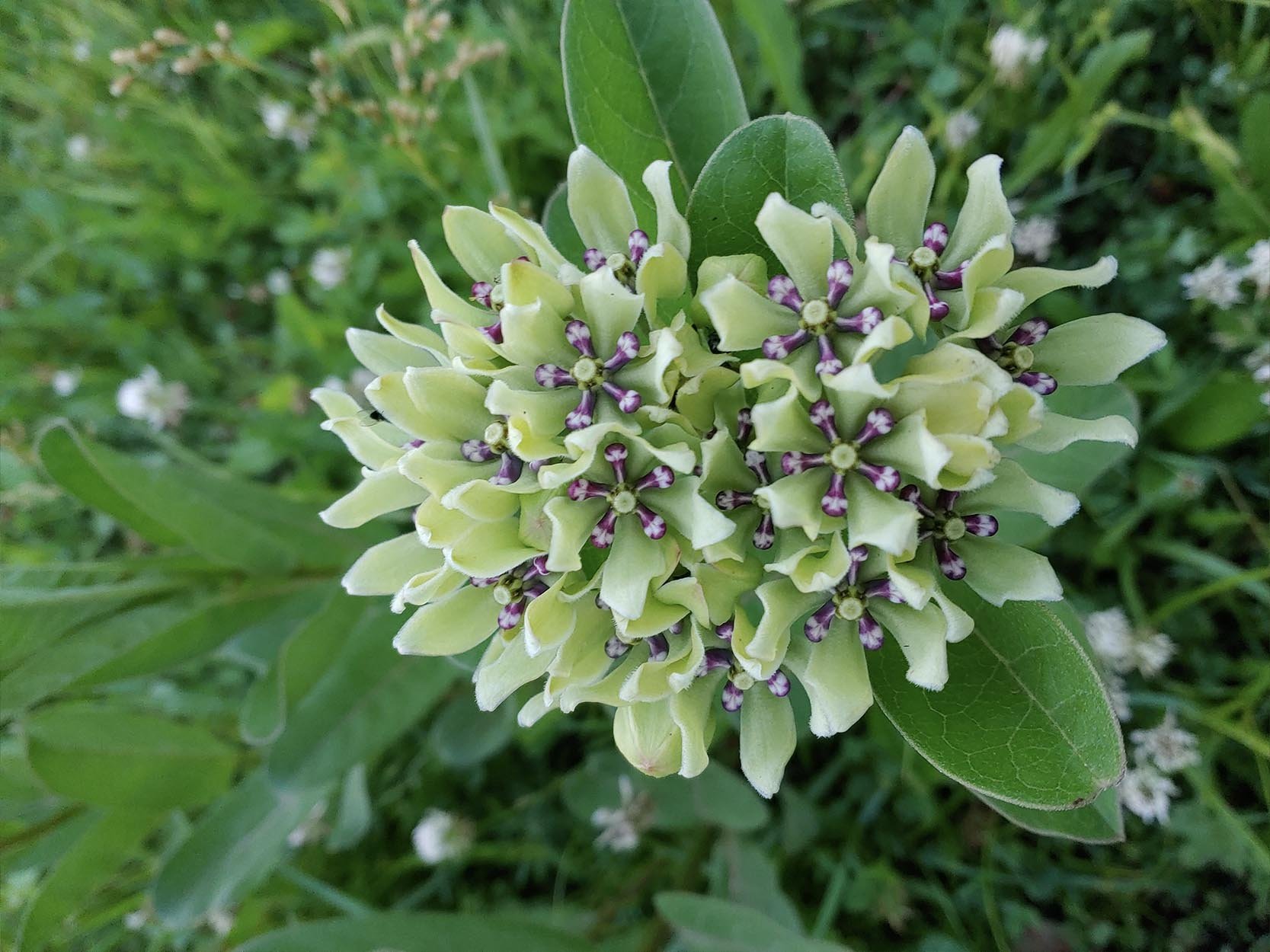
Spider milkweed - Photo by Tim Pohlar
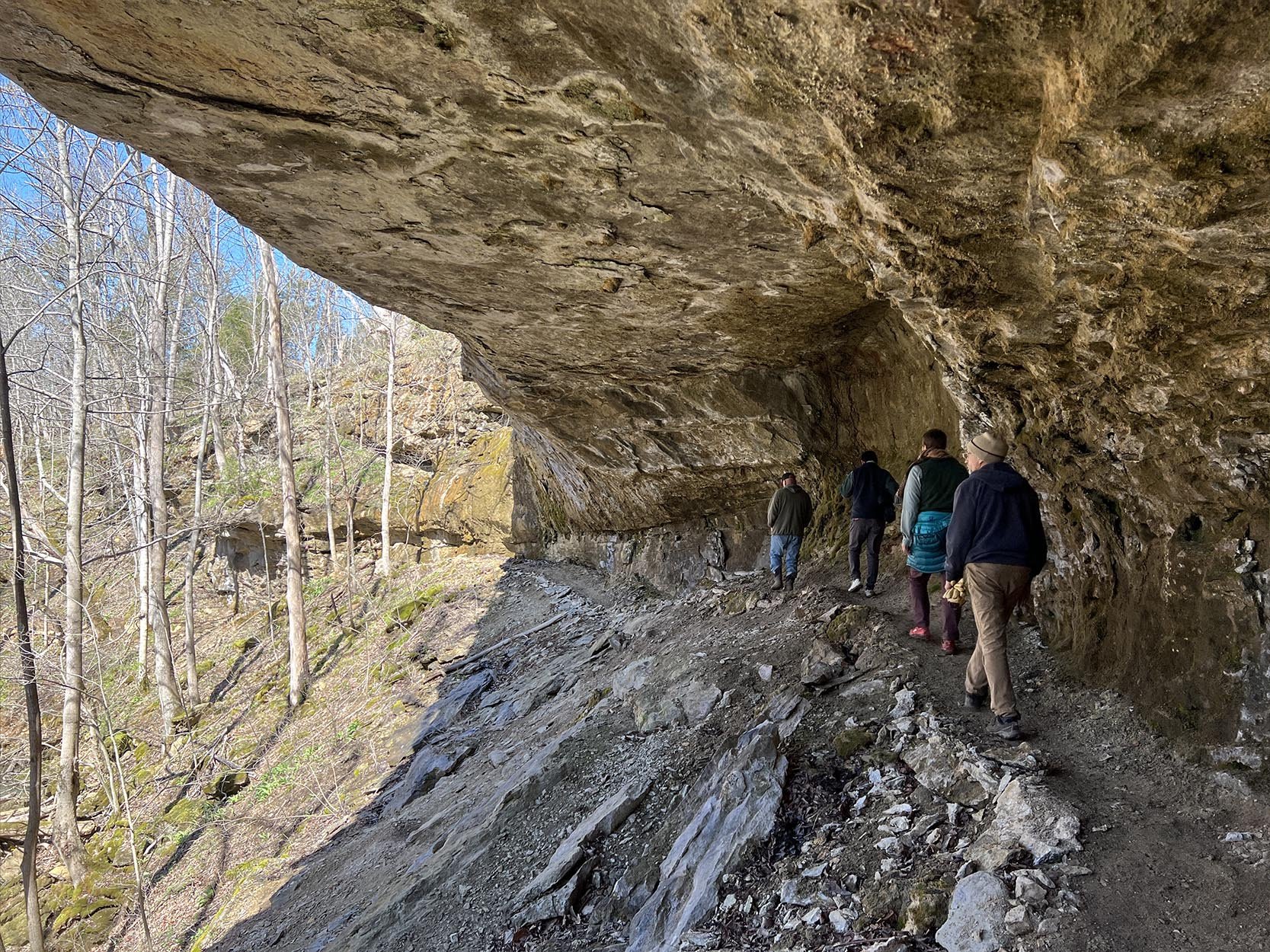
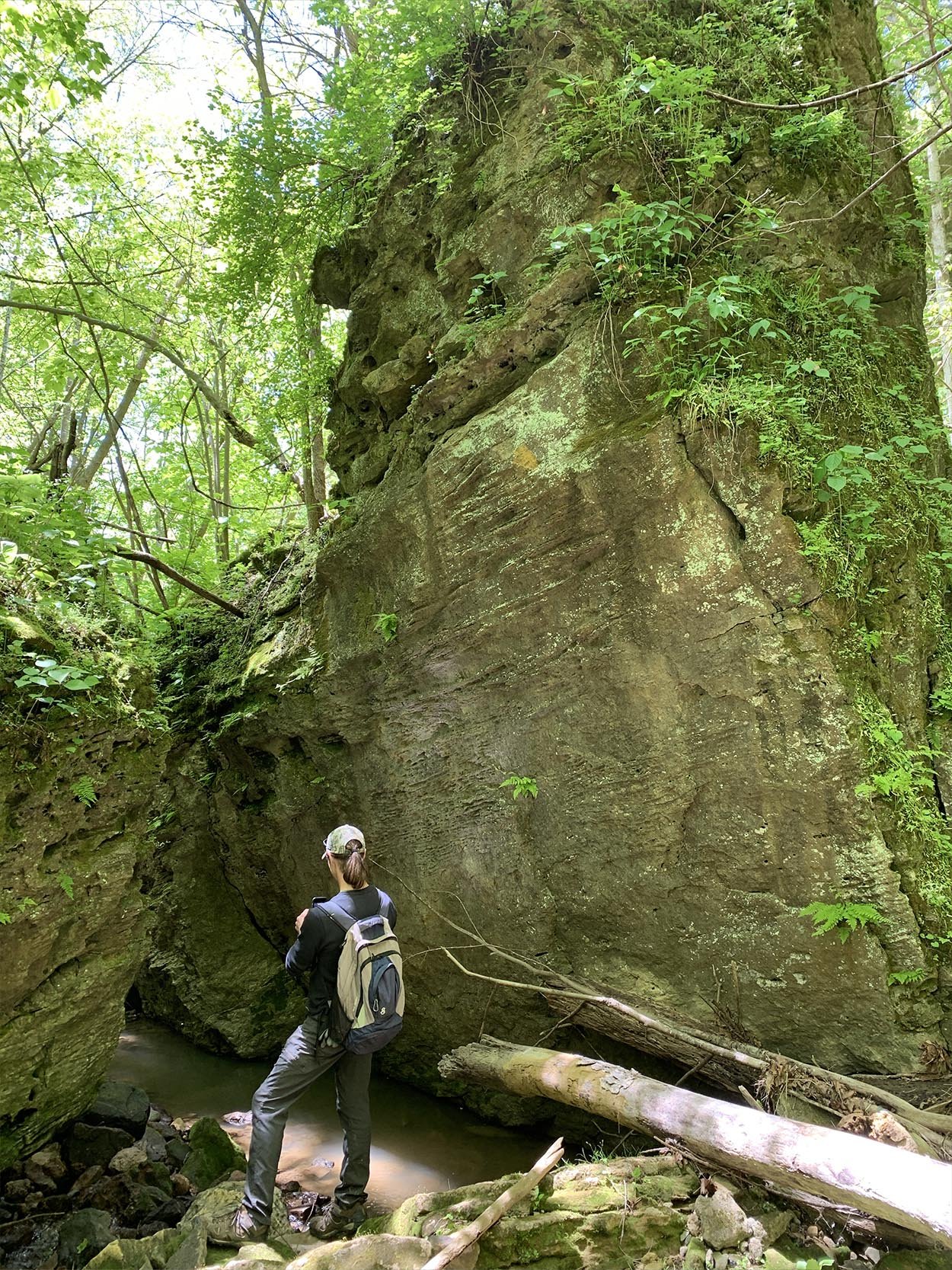

Photo by Tim Pohlar

Photo by Tim Pohlar
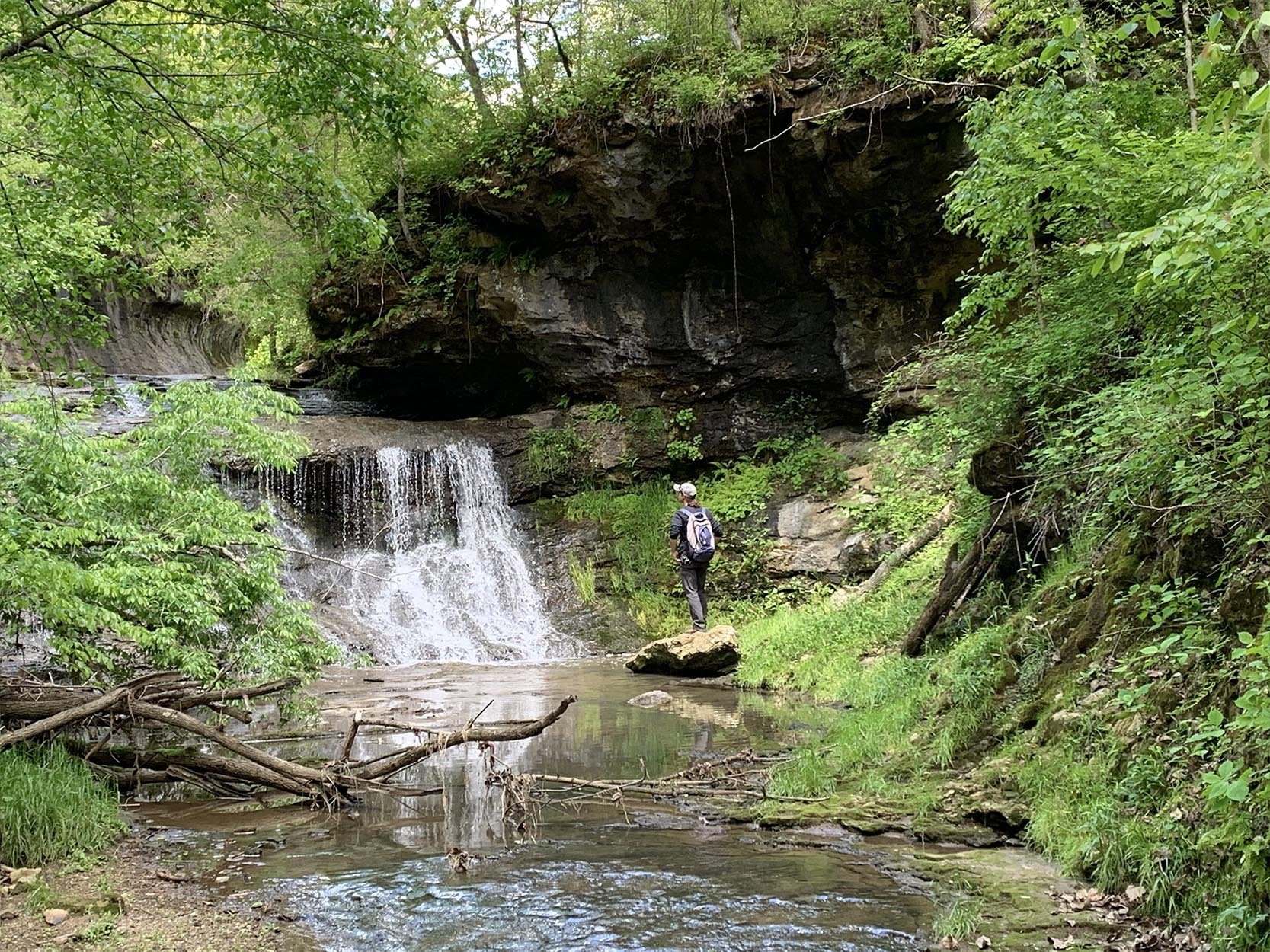
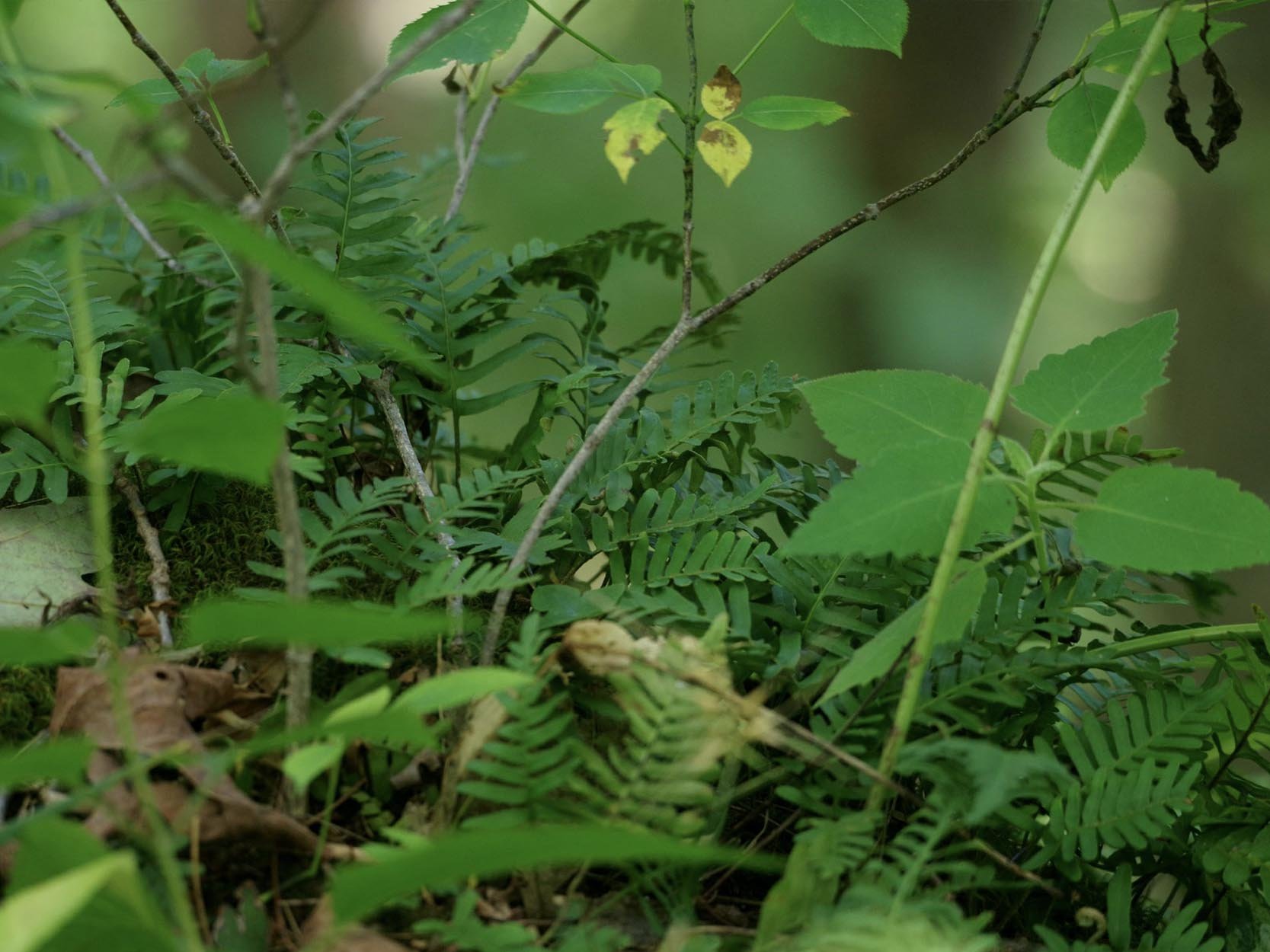
Resurrection Fern - Photo by John Howard
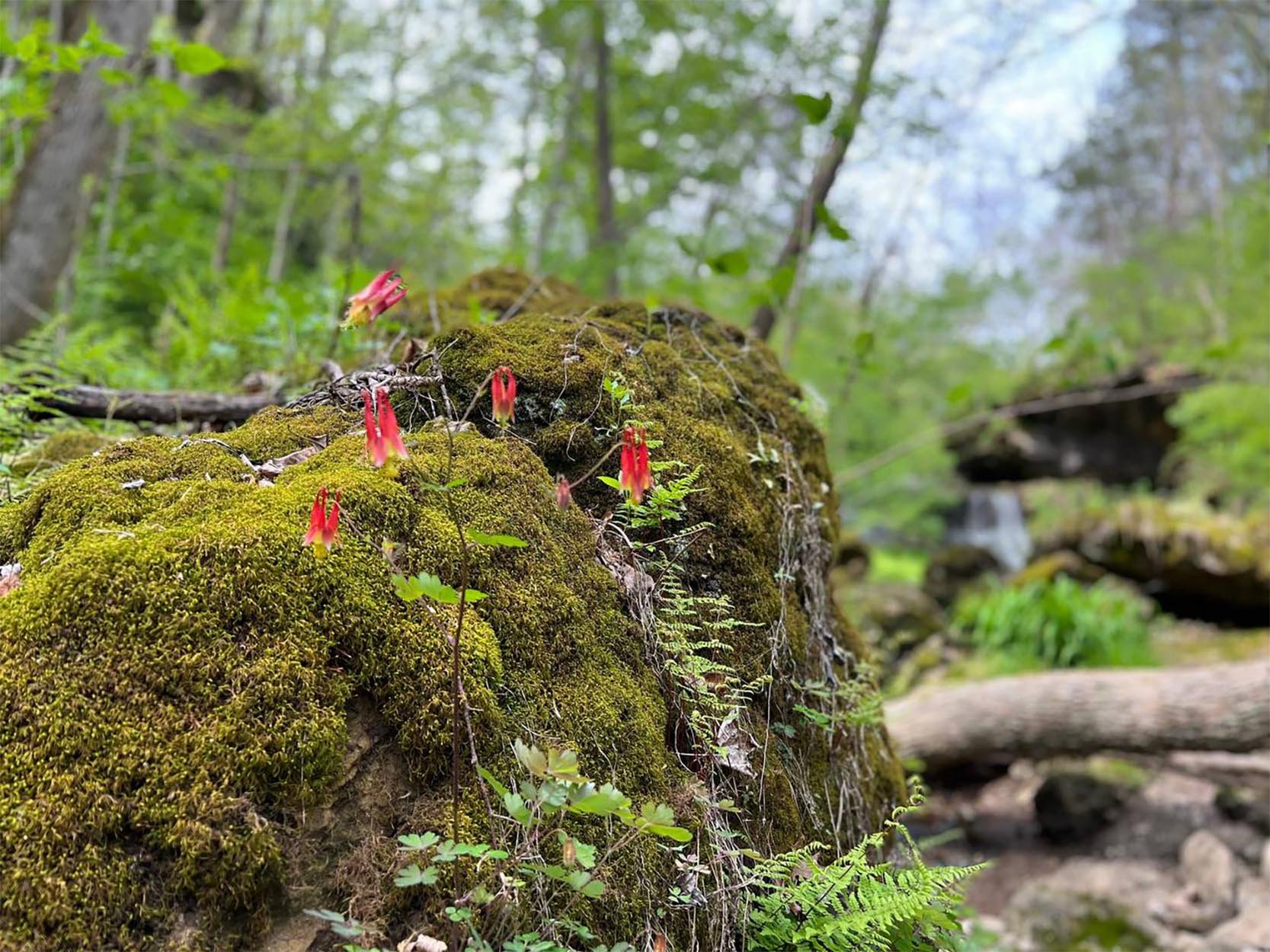
Wild Columbine - Photo by Tim Pohlar

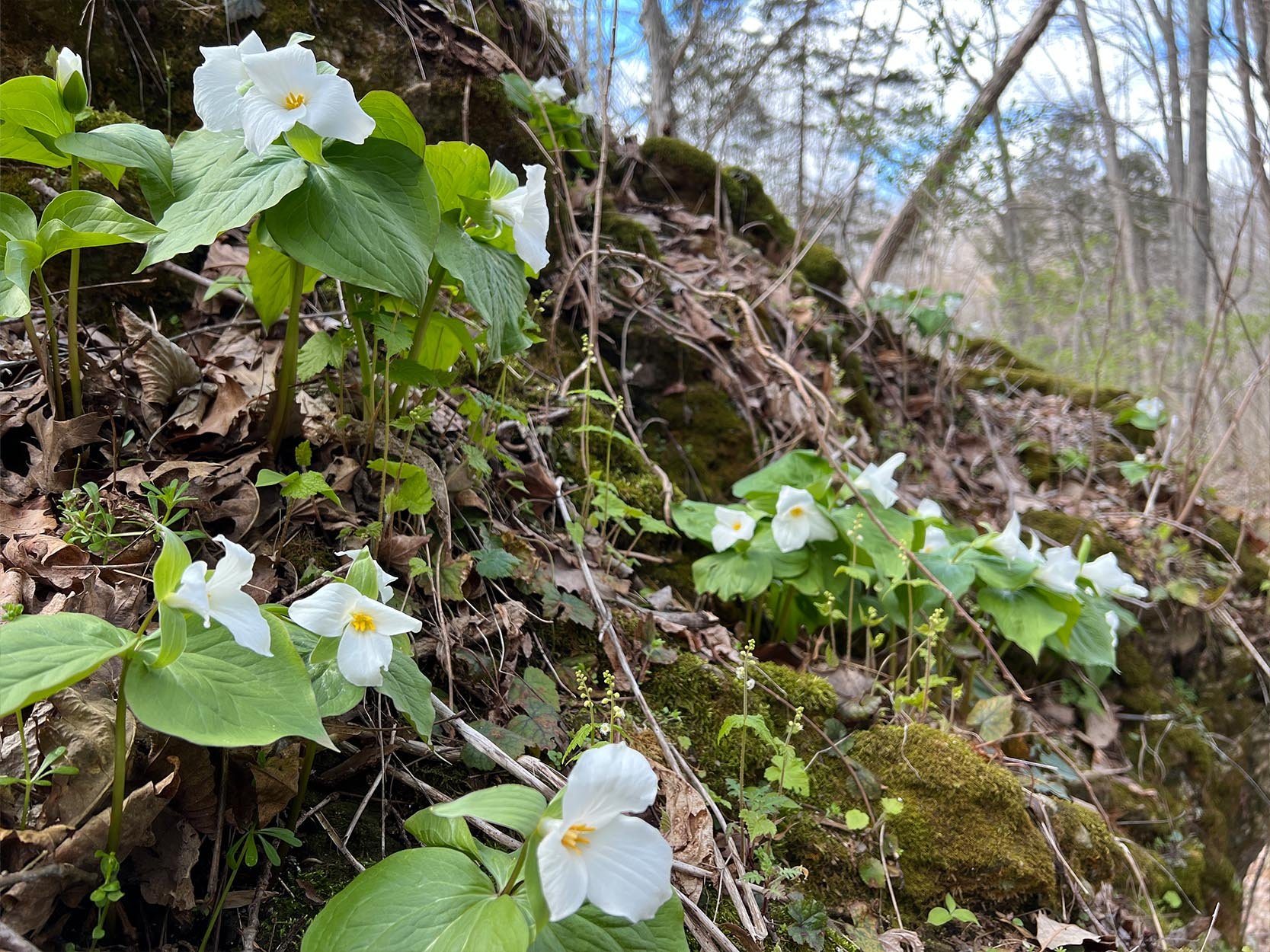
Trillium grandifolium
Natural History. The bedrock of Quiverheart creates a compelling karst-country landscape of cliffs, springs, seeps, grottos, and sinkholes. The bedrock type is dolomite, a type of limestone that has high concentrations of both calcium and magnesium. Tall vertical walls tower above one’s head and huge dolomite boulders tilt at odd angles at the floor of the narrow canyon. High above the gorge is a rim of sentinel rock walls. Covering the fallen rocks in the sheltered, humid depths of the canyon are carpets of liverworts, columbine, miterwort, two kinds of trillium, abundant ferns, and thick cushions of moss. Where Bundle Run widens out into a floodplain, small patches of the globally rare natural community known as alkaline short-grass prairie persist. This plant community is almost entirely restricted in Ohio to Adams County. Look for such species as prairie dock, little bluestem, pale spiked lobelia, summer bluets, whorled rosinweed, and grey-headed coneflower.
Preserve history: In 2022, Quiverheart Preserve was conceived in a most remarkable fashion. Quiverheart’s owners, David and Kim Baker, shared a heart mission to see their 150 acres of land become an enduringly protected nature preserve that could be shared with the public. Finding a suitable partner in the Arc of Appalachia, they made strikingly generous gifts that made it possible to bring their dream to fruition. David and Kim supplied the 25% match required by an awarded Clean Ohio grant, which made it possible for the Arc to purchase the 100-acre gorge. They then set up a bequest to give to the Arc their remaining 50 acres, residence, and barns at their passing; and they funded an endowment fund to reimburse the county and township for lost real estate tax income due to the Arc’s tax-exempt status. Furthermore, David and Kim agreed to serve as the preserve’s voluntary caretakers. They have since removed literally tons of invasive plants, helped to install hiking trails, and led tours. Because of the preserve’s compelling scenery, Quiverheart’s trailhead parking lot began filling up on the weekends as soon as it was built through word of mouth, long before the preserve was publicized and officially open. Many of those visitors were personally welcomed by David and Kim.
Quiverheart is at the exact location of the first steam-powered iron blast furnace built west of the Appalachian Mountains. Founded in 1815, the business employed 400 workers in its heyday. One can still see piles of charcoal that were used to fuel the furnace, and handmade bricks in the creek from the brick foundry that also operated at the site. It is hard to believe that the gorge – now forested and filled with flowers and birdsong –was a bustling factory site just two hundred years ago - filled with noisy machinery, smoke, and the chatter of hundreds of enterprising workers. The factories’ activities heavily disturbed the ground, which later enabled many non-native plants to enter the gorge. David and Kim, assisted by Arc staff and volunteers, have made impressive progress removing the invasive plants and restoring the preserve’s natural communities.
The beautiful dream of Quiverheart Preserve that David and Kim held in their hearts had arisen out of tragedy and loss. David’s farm was first purchased by his father back in 1965. It certainly wasn’t the most productive farm that his father had looked at during his pursuit to buy land, but the farm reminded him of his home in the hills of eastern Kentucky and he was drawn to it. As David’s father aged, David slowly bought the farm from him, parcel by parcel, until David owned the farm in its entirety. His original intention was to let the farm revert to nature, but his plans took a detour.
David and his former wife, Sarah, bore a child, Matthew, who was the light of their lives. As Matthew grew older, he loved being on the farm, playing in the woods, and exploring the cliffs and overhangs. He also loved horses, and because of this passion, the farm was slowly developed with fenced pastures, stables, and even a large indoor riding arena. When deciding on a name for the farm, Matthew said that riding horses made his heart quiver, and thus it became known as Quiverheart Farm.
The rest of the story is in David’s words: “On August 22, 2002, at the age of 16, Matthew’s life was lost to a car accident on his way to Peebles High School on the second day of his junior year. It happened just one mile from the house on Steam Furnace Road.”
“Life can take a catastrophic turn in just a split second. For an awfully long time, I thought my life was over. But eventually, in the depths of my despair, my soul mate, Kim, magically came into my life. As we grew closer, we felt we were being called upon to dedicate the rest of our lives to service.”
“Kim and I are now actively keeping Matthew’s memory alive by teaching 4-H kids—kids who love horses as much as Matthew had. This activity, however, cannot outlast our lifetimes. For years I have contemplated how to keep the memory of my son and my parents alive into the far-flung future. I believe the answer lies in the creation of Quiverheart Preserve.”
Ever since the Arc brought Quiverheart into its suite of preserves, the land has enchanted and surprised us with its capacities. Recently, thanks to a different donor (this one anonymous), Quiverheart began serving as the Arc’s second staffing and stewardship center, the first regional hub to supplement the stewardship services provided by the Arc’s main headquarters at the Highlands Nature Sanctuary.
At a public presentation at Quiverheart, David shared these words: “History was always my favorite subject in school. Try to imagine what the community of Steam Furnace must have looked like at this spot 200 years ago. In those days the sky was filled with smoke from making the charcoal that fueled the furnace. Not one tree was left standing, and the gorge baked in the sun. Here at this site, men took all nature had to give, and, then, just a few decades later when there was nothing left to take, they closed up shop and moved their operations to a more heavily forested region to start anew. It’s time to change our script on this land. Nature will heal, but she can certainly use our help.”


